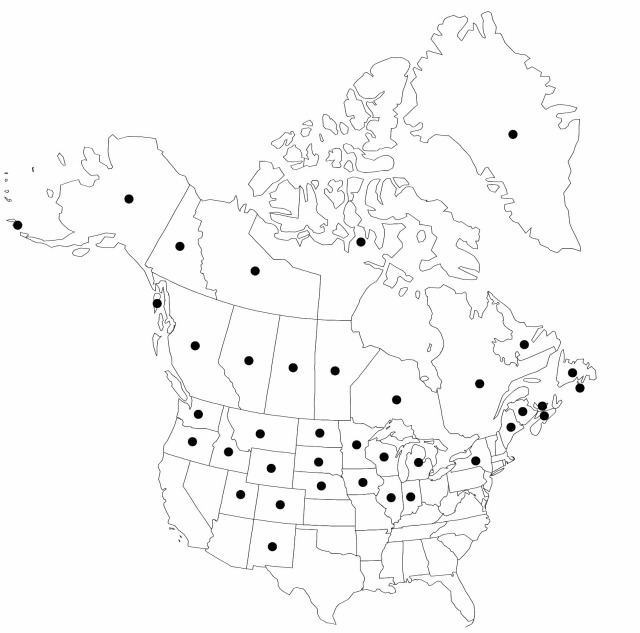Eriophorum angustifolium
Verz. Gew. Teutschl., 153. 1782.
Plants colonial from long-creeping rhizomes. Culms to 100 cm × (0.8–)1–1.2 mm distally. Leaves: blades flat, tip trigonous, channeled in cross section, to 40 cm × 1.5–6(–8) mm; distal leaf blade much longer than sheath. Inflorescences: blade-bearing involucral bracts 1–3, proximally blade, often sheath black, leaflike, longest 1–12 cm. Spikelets (1–)2–10, in subumbels, patent or pendent, ovoid, 10–20 mm in flower, 20–50 mm in fruit; peduncles 5–60 mm, smooth or scabrous; scales lanceolate or ovate, 5–10 mm, with prominent midrib fading proximal to tip, apex ± acute; proximal scales without lateral ribs. Flowers: perianth bristles 10 or more, white or pale yellow brown, 15–30 mm, smooth; anthers 2–5 mm. Achenes black, oblanceoloid, 2–5 mm.
Distribution

North America, n Eurasia.
Discussion
eriophorum polystachion linnaeus is a rejected name
Subspecies 2 (2 in the flora).
Selected References
None.
Key
| 1 | Peduncles glabrous or scabrous on angles; culms 20–100 cm. | Eriophorum angustifolium subsp. angustifolium |
| 1 | Peduncles usually scabrous all around; culms not more than 30 cm. | Eriophorum angustifolium subsp. triste |